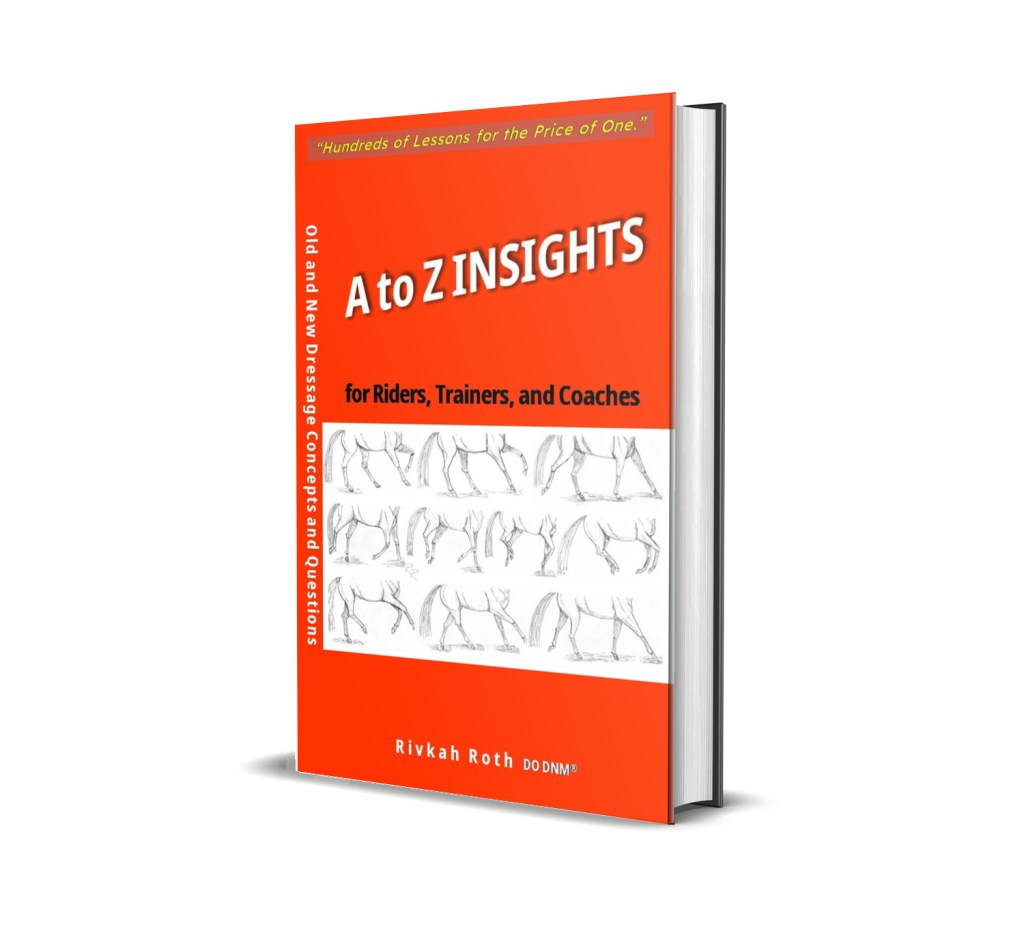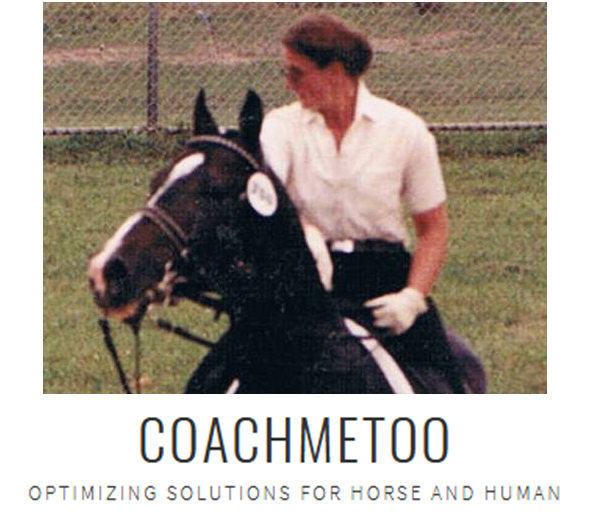Old and New Dressage Concepts and Questions for Riders, Trainers, and Coaches
HOME =O= BOOK INFO =O= FOREWORD =O= ORDER BOOKS
ABOUT =O= TESTIMONIALS
BLOG =O= EQUIOPATHY  CoachMeToo =O= CONTACT
CoachMeToo =O= CONTACT
Limited Time OFFERS
from time to time
in conjunction with Clinics and Shows
To inquire about upcoming Specials please use the Contact page.
“A to Z Insights”
is now available in English!
What Others Say…
Read the Foreword to “A to Z Insights for Riders, Trainers, and Coaches”
by the Training Ambassador of the German Equestrian Federation (FN)


ORDER BOOKS
Read the
COMMENTS and TESTIMONIALS
by our Mentees, Clients, and Students.

You acknowledged my work…
…time for me to acknowledge you.
Training – Coaching – Optimizing

for Prevention, Rehabilitation, Optimization
Explore Equiopathy
Our Philosophy…

What – Where – How – When – Why
Everything Correlates
For the horse to find self-carriage its rider must ride in self-carriage with ultimate control of an independent seat.
“Like Rider like Horse
Like Horse like Rider” (RR)

Timing is Key
Each aid has its own timing for the horse to be able to comply.
A rigid horse indicates a rider who has yet to find an independent seat and feel of footfall and timing.

Biomechanics & Vector Forces
Biomechanics predicts Force Vectors, and only the optimal interplay of these forces prevents injuries.

Conformation enables
but is easily limited by the rider.
“Many riders need horses that can move – few riders make horses that can move.” (RR)

Rider and Horse Interactions
Like an endless figure-eight loop, any positive or negative change anywhere in the circuit influences everything else.
“Like Rider like Horse – Like Horse like Rider” – 1980 © Rivkah Roth DO DNM®


